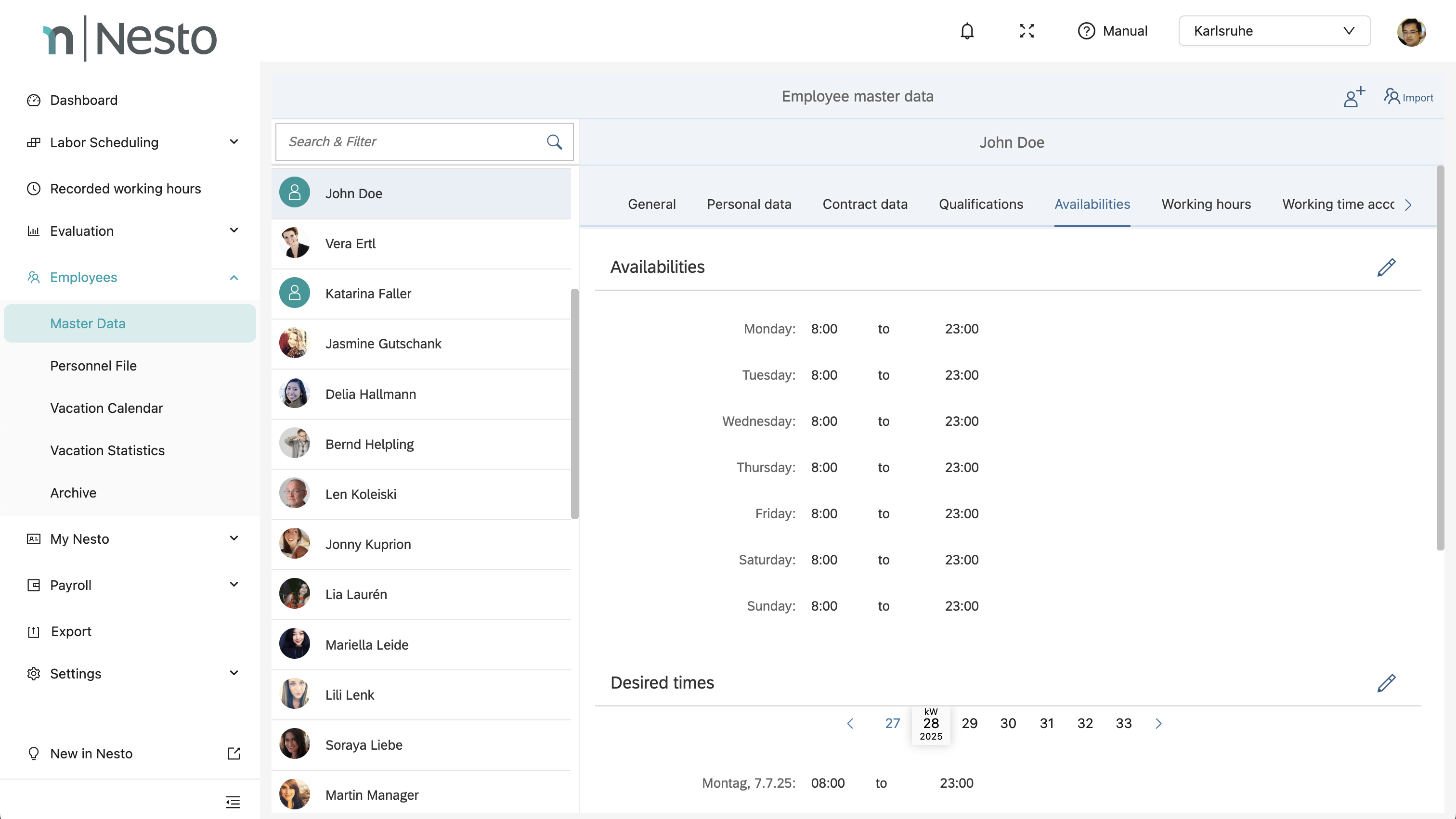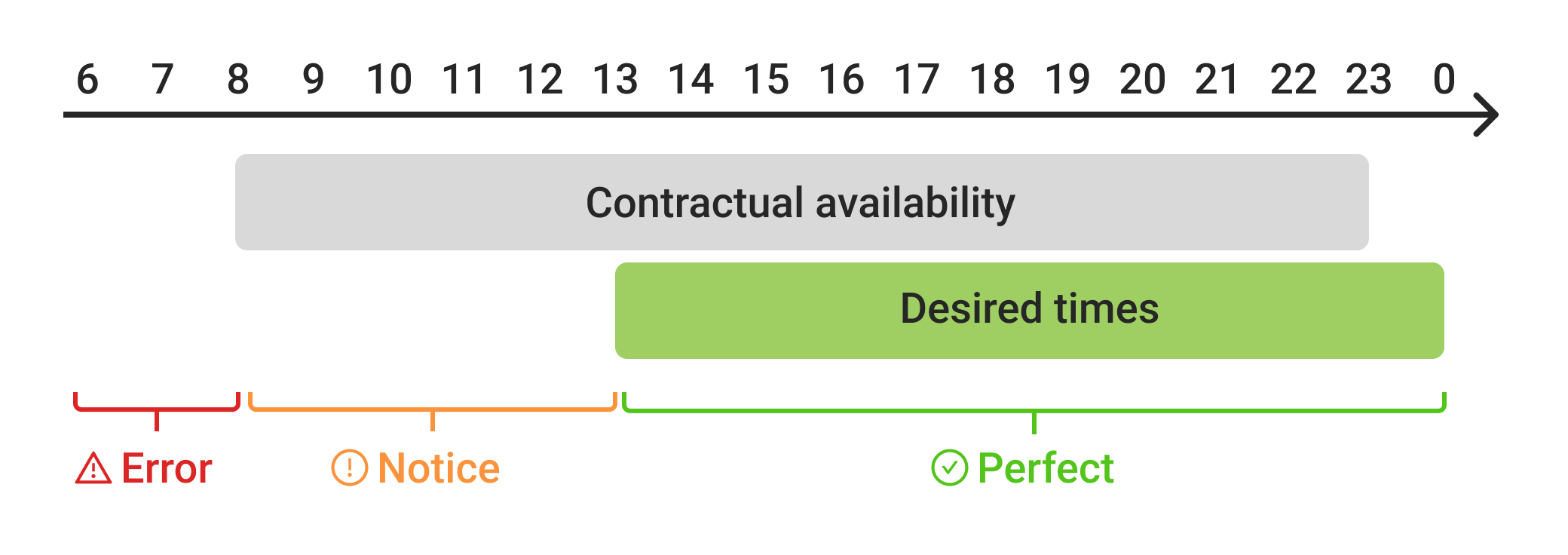Availability & preferred times
In the employee master data, the availabilities of employees can be entered. Nesto distinguishes between contractual availability and preferred times, which are explained below.

Contractual Availability
With contractual availabilities, general restrictions on the plannable time periods of employees can be stored in Nesto. For each weekday (Monday to Sunday), it can be specified whether employees are usually available on that day and during which time period they may be scheduled. If employees are scheduled outside these time periods, this is shown as an error in the shift planning.
An example of using contractual availability is part-time employees. Contractual availabilities can, for instance, specify that scheduling is only possible on Monday, Tuesday, and Sunday from 6 a.m. to 2 p.m., as well as on Saturdays from 6 a.m. to 6 p.m.
Usually, the weekdays and times stored in the contractual availabilities correspond to those agreed upon in the employment contract.
Preferred Times
In addition, preferred times can be entered in Nesto. Preferred times allow specific wishes of employees to be taken into account. For each calendar day, it can be indicated whether and during which time periods shifts are desired or not desired. Unlike contractual availabilities, these refer to calendar days rather than weekdays, and multiple time periods can be specified on a single day. For example, it can be indicated that on Tuesday, 02.01.2024, a shift is only desired in the afternoon from 1 p.m. onwards.
Preferred times are displayed in the planning, and violations are shown as warnings. Since these are wishes and – unlike contractual availability – not mandatory times, they can be optionally considered but do not result in an error.
Combinability
Because contractual availabilities and preferred times represent different types of availability, they can and should be combined. When combining the two availabilities, there are two rules:
Violations of contractual availabilities lead to an error, while violations of preferred times lead to a warning.
Preferred times "override" contractual availabilities.
The following graphic illustrates the mechanism with an example. If an employee is contractually available from 8 a.m. to 11 p.m. on a specific calendar day but prefers a shift from 1 p.m. to midnight, then the following applies during planning:
If scheduled before 8 a.m., this violates the contractual availability and results in an error.
If scheduled between 8 a.m. and 1 p.m., this violates the preferred times and a warning is shown.
Scheduling between 1 p.m. and midnight is ideal.

Minimum and Maximum Net Working Time
These data can be stored per employee. During automatic shift assignment, the planning assistant will strictly adhere to these specifications and will not assign employees to shifts that fall outside this defined time frame. If shifts remain unfilled, one reason could be that too narrow time periods were set on this settings page.
